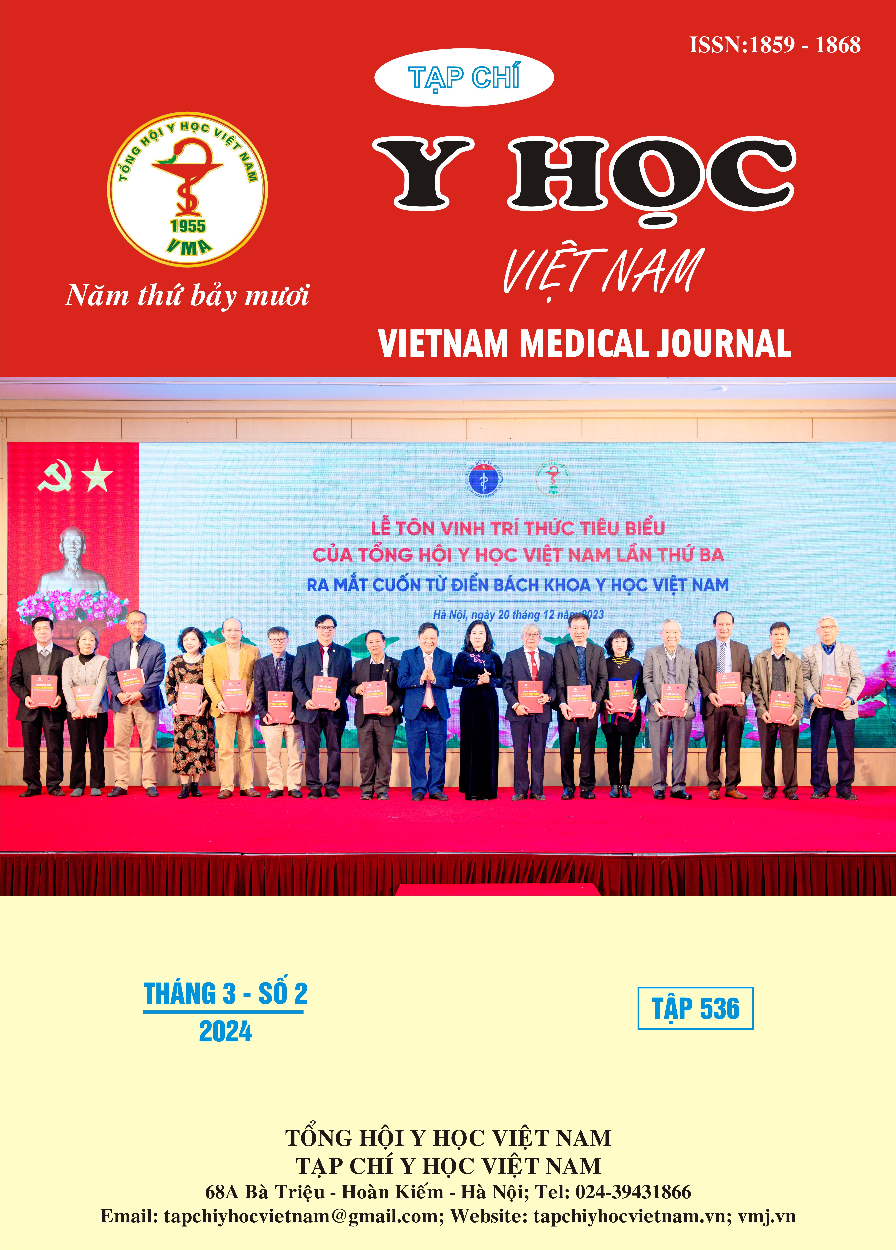EPIDEMIOLOGICAL, CLINICAL, PARA-CLINICAL CHARACTERISTICS, COMPLICATIONS AND RESULTS OF TREATMENT OF FLU IN CHILDRENAT VINH MEDICAL UNIVERSITY HOSPITAL
Main Article Content
Abstract
Objective: Describe the clinical and paraclinical epidemiological characteristics, complications and comment on the results of treatment of seasonal influenza in children at Vinh Medical University Hospital from September 1, 2023 to August 31 /20223. Method: Describes a series of cases. Results: Seasonal influenza infection rate was 19.09%, including 49.9% influenza A infection, 45.2% influenza B infection and 4.9% co-infection with influenza A and influenza B. Number of pediatric influenza patients living in the region Rural: 18.41%, city: 81.59%. The male/female ratio is 1.27, the most infected children are at the age of 12 months - 60 months, accounting for 57.57%. Influenza is most common in winter, most children come to the doctor because of fever and cough (89.84%), moderate and high fever account for over 90% of cases, most children have symptoms of cough, runny nose, sore throat accounting for 88.99 - 95%, white blood cell count increases in 37.99%, CRP increases in 21.48% > 12mg/L. Complications: 47.83% of children suffered from complications of influenza, pneumonia: 46.24%, bronchitis: 31.86%, otitis media: 7.96%, diarrhea: 7.74%. Unvaccinated children are 2.78 times more likely to have complications from influenza infection than vaccinated children. Influenza patients not treated with Oseltamivir are 8.35 times more likely to develop complications than influenza patients treated with Oseltamivir. Conclusion: Seasonal flu has main symptoms of fever, common complications are respiratory infections. Early treatment with Oseltamivir reduces the risk of complications. Unvaccinated children are at higher risk of complications from flu infection than vaccinated children.
Article Details
References
2. Who Organization, 2022, Guidelines for the clinical management of severe illness from influenza virus infections.
3. Cục Y tế Dự phòng, 2016, Bệnh cúm. ttps://vncdc.gov.vn/benh-cum-nd14502.
4. Nguyễn Trung Cấp, 2022, "Một số vấn đề lưu ý trong chẩn đoán - điều trị cúm hiện nay" https://kcb.vn
5. Vũ Thị Ánh Hồng, Nguyễn Ngọc Sáng, Tô Thanh Hương, 2021, "Đặc điểm dịch tễ học lâm sàng và biến chứng bệnh cúm mùa tại Bệnh viện Trẻ em Hải Phòng. Tạp chí Y học Việt Nam, tập 503, tháng 6, số đặc biệt, phần 2 - 2021,
6. Nguyễn Thị Sang và CS, 2022, "Tác nhân virut gây viêm đường hô hấp cấp tính nặng (SARI) trên các bệnh nhân nội trú tại Bệnh viện Đa khoa tỉnh Quảng Ninh, 2018 - 2019". Tạp chí Y học Dự phòng, Tập 32, số 2 - 2022.
7. Nguyễn Trung Hiếu và CS, 2022, "Sự lưu hành và đặc điểm của vi rút cúm mùa tại Miền Nam Việt Nam giai đoạn 2018 - 2020". Tạp chí Y học Dự phòng, Tập 32, số 4 - 2022.
8. Sikora C, Fan S, Golonka R, et al. 2010, Transmission of pandemic influenza A (H1N1) 2009 within households: Edmonton, Canada. J Clin Virol. 2010;49(2):90-3.
9. Đỗ Thiện Hải, 2010, "Nghiên cứu đặc điểm dịch tễ học, lâm sàng, cận lâm sàng của bệnh nhi mắc cúm A(H1N1) chủng mới 2009 tại bệnh viện nhi Trung Ương ", Luận văn Thạc sỹ Trường Đại học Y Hà Nội
10. Stamm David Brian and et al, 2023, "The Influence of Rapid Influenza Diagnostic Testing on Clinician Decision-making for Patients with Acute Respiratory Infection in Urgent Care". Clin Infect Dis, 2023. ciad038. doi: 10.1093/cid/ciad038.


